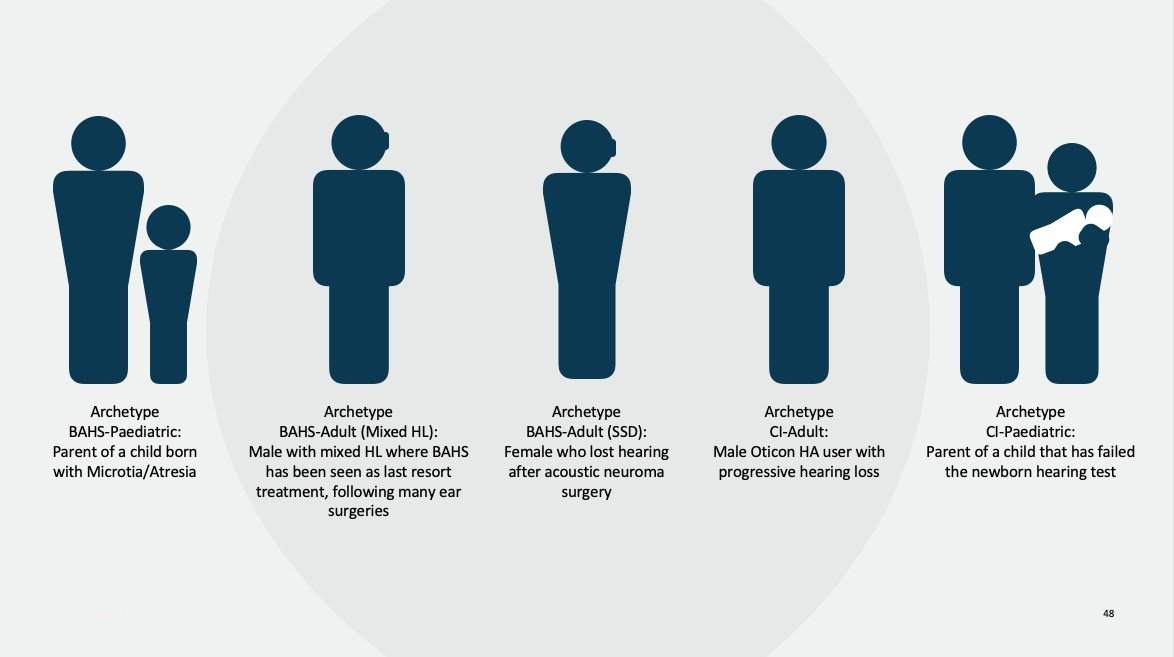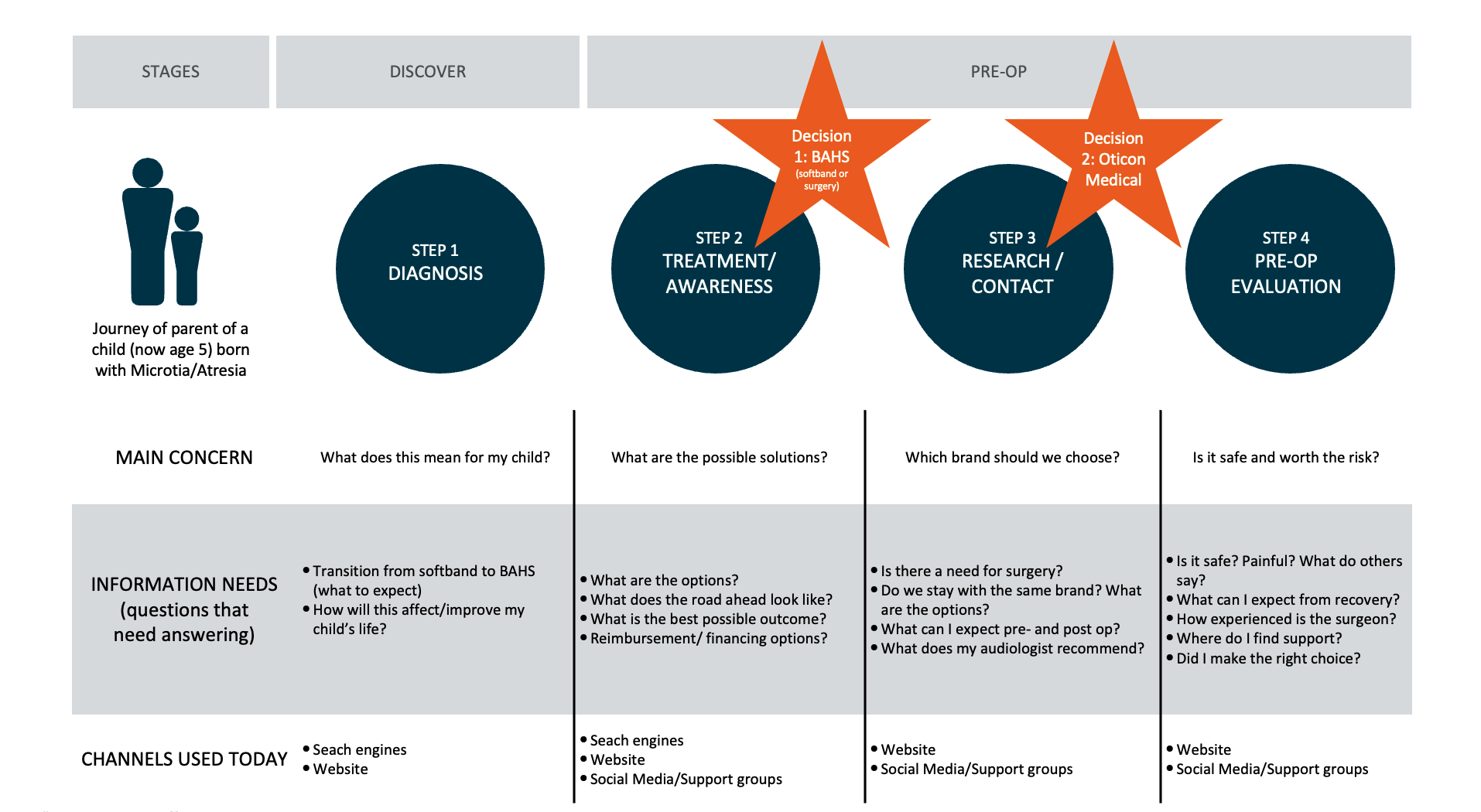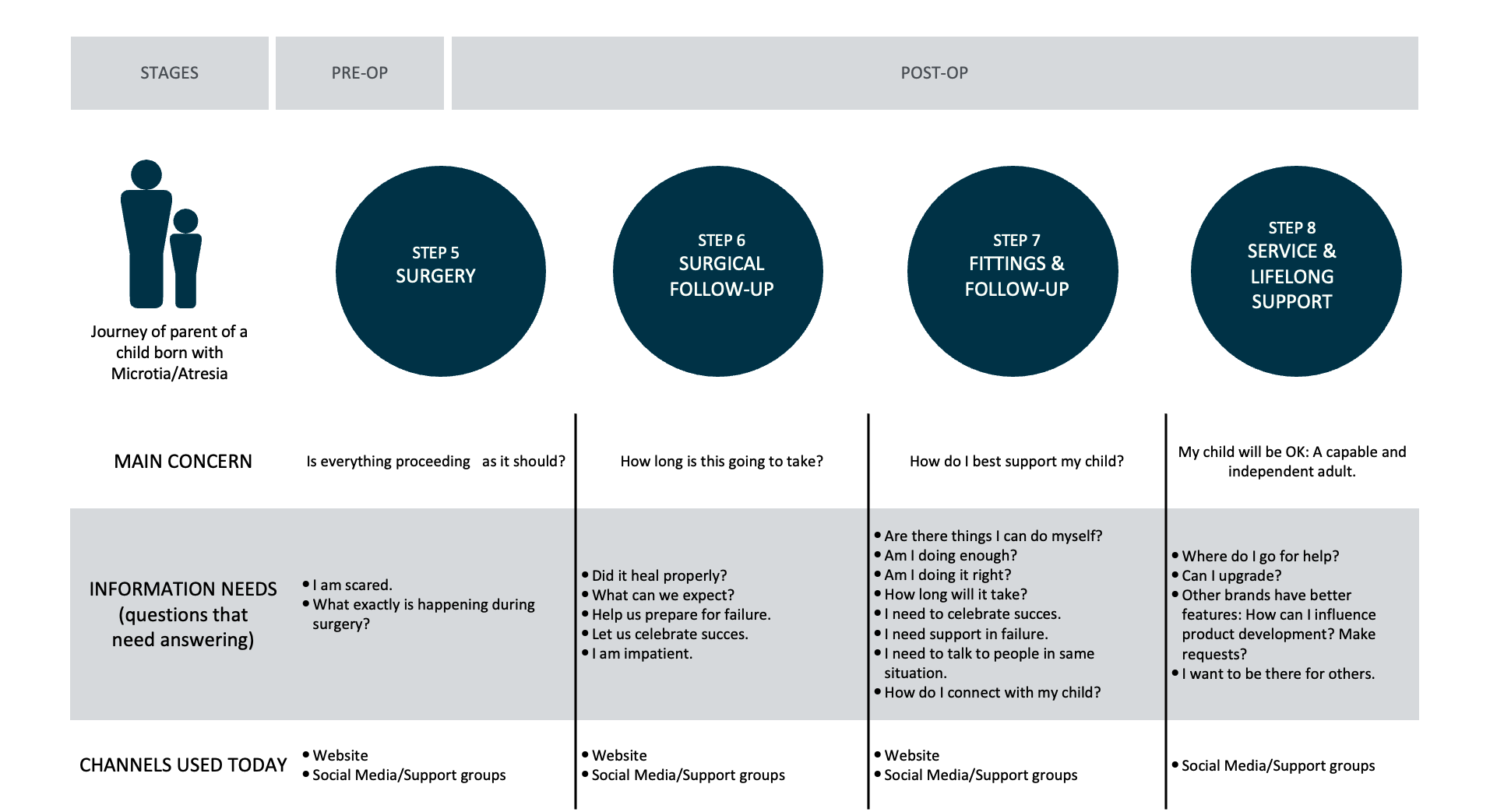Oticon Medical creates
compelling online solutions
that elevate the user experience
and drive positive patient outcomes, Oticon Medical
Digital Strategy Development
The Digital Strategy was the master plan for all activities surrounding Oticon Medical’s online presence.
It was a tool for planning and prioritising initiatives aimed at boosting awareness, increasing market share and minimising resources used.
The digital strategy was focused on end-user communication and platforms only.
The digital strategy contained both short term and long term goals for 18 and 48 months.
The short term goals were very tactical and included important hygiene factors that needed to be in place in order to build an effective digital platform. The online platform would, in turn, serve as a solid basis for future business ambition.
Corporate assessment
Internal Audit: Global, key stakeholders were interviewed.
Desk research: Business strategies, plans & objectives.
Target Audience: Creation of archetypes and user journeys based in research.
Industry online trend assessment: Now and in the future
Candidate & user research: Behavioural mapping.
Technological development.
Competitive audit
High-level analysis of the existing online presence incl. analytics & online survey data.
High-level benchmarking of competitor’s online presence (based on competitor analysis and desk research/best practice).




Deliverables Digital Strategy
Internal Audit
Common goals and ambitions for Oticon Medical’s digital presence were identified through stakeholder interviews: All agreed that the battle for the end-user would take place online and that online media would become even more important over time.
By the time of the assessemt the digital team was merely executing communication created by Product Managers. This maked any strategic focus on the digital channels nearly impossible. We needed provide a case for giving channel owners the mandate to build and drive efficient, relevant and targeted digital channels.
Target Audience Analysis
Through desk research, quantitative research and qualitative research on people with hearing loss, their families, users and their families and lastly medical professionals 5 archetypes were conducted: 3 for BAHS and two for CI.
Each archetype included a description of their basic demography and behaviour as well as a user journey in 8 steps.
Competitive audit
With respect to user needs and trends, Oticon Medical was benchmarked against competitors in order to identify potential blue oceans for their digital presence:
One competitor was considered the most digitally mature and appeared to have greater resources at their disposal – which was difficult to compete with.
Oticon Medical was, together with two other competitors at the time, still very immature as far as digital media. In their current states, the online presence of the two immature competitors should be fairly easy to outperform, if the right investments were made.
In terms of major industry trends an opportunity to gain first mover advantage was indeed identified.
Major Industry Digital Trends
3 future health care trends were identified and matched against user needs. Oticon Medical was urged to develop services that match these 3 trends:
Health/home healthcare: Patients take charge of their own treatment/recovery through home healthcare practice supported by electronic processes and telemedicine.
Gamification: The implementation of game mechanics to digital services in order to drive patient interaction and provide tangible data and feedback.
Open innovation: The involvement of partners (doctors, surgeons, clinics, nurses, pharmacists, patients, schools etc.) in product- and service development.
Digital Vision Statement
Oticon Medical’s digital presence should be on par with the quality of its implants, processors and procedures. A vision statement was created to drive the future ambition of all digital initiatives:
“Oticon Medical creates compelling online solutions that elevate the user experience and drive positive patient outcomes”
Digital Mission Statement
A mission statement focused on the objectives of the digital presence was created, outlining what Oticon Medical does, who it serves, and how they stand out from competitors. It captures the essence of why Oticon Medical exists and their digital purpose.
Digital KPIs
Online Key Performance Indicators are the quantifiable measurements used to determine the digital performance across digital channels. KPIs were determined for all 8 steps in the user journeys in each of the 5 archetypes.
The digital KPIs helped reach the business goals over time.
Key Action Initiatives
In order to reach the goals and ambitions identified in the stakeholder interviews and analysis, it was recommended that Oticon Medical proceeded with the following two step journey:
Step 1 - Short term, 18 months:
Shifting the online marketing baseline from immature to mature.
The Key Action Initiatives were primarily short term in nature because they were basic hygiene factors that needed to be in place for Oticon Medical to succeed with the vision and the stated KPIs in the strategy.
Step 2 - Long term, 48 months:
Shift the online marketing baseline from mature to very mature through product innovation and user involvement.
Short Term Key Action Initiatives
Recommendations were created around the following Key Action Iniatives (KAI):
KAI 1: Boost presence & awareness, online marketing, global website and SoMe.
KAI 2: Create great and more relevant content across all channels.
KAI 3: Make informed decisions based on data through tracking and performance management.
KAI 4: Develop the Digital Marketing Organisation through ownership, mandate, reorganisation, upskilling and recruitment of staff.
Long Term Key Action Initiatives
Recommendations were created around the following Key Action Iniatives (KAI) incl. concept development of a personalised digital service:
KAI 5: Personalised digital services as part of the product offering, high-level concept developent.
KAI 6: Working strategically with major Industry Digital Trends and User Needs.
Priliminary Roadmap
A strategic plan outlining the sequence of steps and milestones needed to achieve the goals and Key Action Initiatives. It served as a guide for planning and executing projects, showing the timeline, priorities, and resources involved.
Tools for governance and prioritisation were delivered as part of the roadmap.
“Sometimes change is a process. But most of the time it’s just a decision”
— Karri Flatla